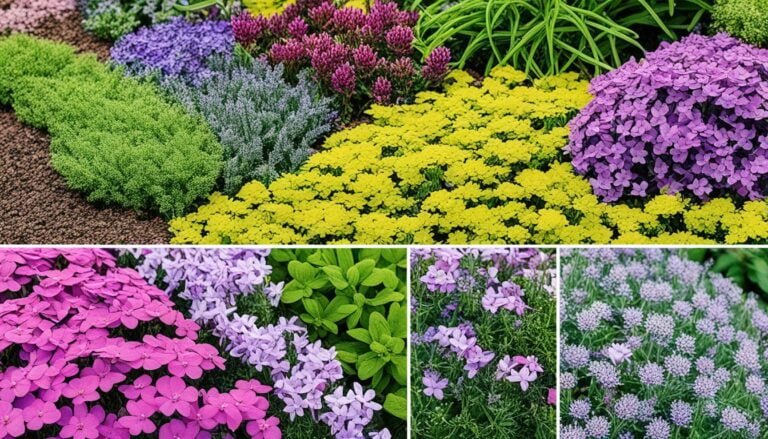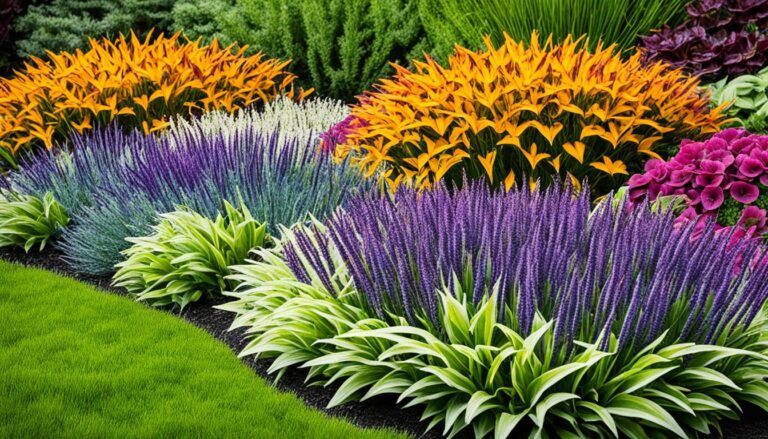Bare root strawberries are affordable and simple to grow in the garden. They let gardeners pick from many types, such as those that taste best, fight off diseases, or handle the weather well. You should plant them early so they can grow strong roots and runners.
At first, these strawberries might look dead. But, with enough water and careful planting, they will turn into a wonderful garden.
Key Takeaways
- Bare root strawberries are a cost-effective choice compared to potted plants, especially when purchased in bulk.
- Plants should be spaced 18 to 24 inches apart in rows 3 to 4 feet apart using the matted row system.
- The crown of the strawberry plant must be placed at the soil line to avoid stunted growth.
- Rehydrating bare roots in water for one to two hours before planting is recommended.
- Bare root strawberries typically do not produce berries in the first year; the second year yields a good harvest.
- Using an organic fertilizer such as fish emulsion can provide a nutrient boost to newly planted strawberries.
Introduction to Bare Root Strawberries
For those new to gardening, bare root strawberries are a neat choice. They are plants shipped without soil. This makes them easy to move and handle.
What are Bare Root Strawberries?
You’ll usually get 25 bare root plants at once, which saves money. These plants are light and easy to ship. They need to be planted in early spring, while they are dormant.
Advantages of Bare Root Strawberries
With bare root strawberries, you can choose from many types. You can find favorite kinds online, like ‘Albion’ and ‘White Carolina Pineberry’. They’re cheaper than potted plants.
| Strawberry Variety | Cost (per 25 Plants) | Storage Recommendation |
|---|---|---|
| Albion | $21.95 | Store up to 2 weeks in cool, moist conditions |
| White Carolina Pineberry | $20.00 | Store up to 2 weeks in cool, moist conditions |
| Whopper (10 Plants) | $15.00 | Store up to 2 weeks in cool, moist conditions |
These plants are also good for people wanting to grow unique strawberries. When planting them, soak the roots in water. Make sure to trim the roots too. This helps the plants grow strong.
Choosing the Best Bare Root Strawberry Varieties
Choosing the right strawberry types is key to a successful garden. The best varieties will fill your garden with sweet and juicy strawberries.
Popular Strawberry Cultivars
It’s important to know what different strawberry plants offer. For instance, the ‘Albion’ variety from Burpee costs $21.95 for 25 plants. It’s known for being productive and tasting sweet.
The ‘White Carolina Pineberry’ from Urban Farmer, at $20 for 25 plants, has unique white fruit with red seeds. It tastes like pineapple. Another well-liked type is the ‘Whopper’ from Gurney’s Seeds, available at $15 for 10 plants. It’s famous for its big, sweet berries.
Factors to Consider
Think about flavor, berry size, plant toughness, and disease fighting ability when picking strawberries. If you like sweet berries, focus on the flavor. If you want impressive fruits, consider berry size. Plant hardiness and disease resistance help your garden stay natural and healthy.
Also, keep in mind the best soil mix: 40% compost, 40% topsoil, 20% aeration material, and high-quality potting mix.
| Variety | Source | Price | Features |
|---|---|---|---|
| Albion | Burpee | $21.95 for 25 plants | Sweet flavor, high productivity |
| White Carolina Pineberry | Urban Farmer | $20 for 25 plants | Pineapple-like taste, unique white berries |
| Whopper | Gurney’s Seeds | $15 for 10 plants | Large, juicy fruits |
When to Plant Bare Root Strawberries
The best time to plant strawberries is in early spring. This is when the ground is soft enough to work. It’s also cool and damp, which is great for the roots to take hold. Bare root strawberry plants should be planted before they start showing new green leaves. This quiet time allows them to focus on growing strong roots.
Quick planting after you get bare root strawberries is key. But if you can’t plant them right away, keep them cool and moist. A fridge’s crisper drawer can work as a short-term spot. Just don’t let them stay there for more than two weeks.
Day-neutral strawberries and June-bearing strawberries are great for early spring planting. Day-neutrals give fruit all season, while June-bearers make big harvests great for saving or canning.
It’s best if the soil for strawberries is a bit acidic, between 5.3 and 6.5 pH. Test your soil before planting. Adjusting it as needed will help your strawberries grow well and bear lots of fruit.
Preparing Your Planting Site
Getting a strawberry patch ready to grow needs careful attention. Testing the soil’s pH is a must. Adding compost also helps the plants grow well and produce lots of berries.
Soil pH and Testing
The best pH level for strawberries is between 5.3 and 6.5. Test the soil before planting to find the right pH. This avoids any nutrient issues. Getting the pH right means healthy strawberries.
Composting and Soil Preparation
For strawberries, mix 3 inches of compost into the top 6 inches of soil. This makes the soil better by adding organic material. It also helps keep in water and makes nutrients available. Preparing like this ensures your strawberries have everything they need for a 3-4 year fruitful life.
| Planting System | Plant Spacing | Row Spacing |
|---|---|---|
| Matted Rows (Northern and Eastern States) | 1½-2’ | 3½-4’ |
| Solid Beds (Backyard Gardens) | 10-14” | 1½-2’ |
Proper testing and composting help strawberry plants succeed. These steps lead to strong roots and runners. In the end, you get plenty of tasty strawberries to enjoy.
How to Plant Bare Root Strawberries
When you’re planting bare root strawberries, doing it right makes all the difference. It’s key to make sure they grow well and you get lots of berries. Use these steps for planting strawberries to do it the best way.
Unpacking and Rehydrating the Plants
When you get your bare root strawberries, open the package carefully. Check for any harm. It’s important to rehydrate them next. Put the roots in warm water for an hour or two. This helps them get ready to grow, but don’t soak them for too long or they might rot.
Proper Planting Techniques
First, prepare your garden by making holes. The holes should fit the roots well. Cut the roots to about 6 inches long. This helps the plant settle into the soil better. Make sure the top of the plant is even with the ground. If it’s too low, it can rot. If it’s too high, it might not grow right.
Plant the strawberries 18 to 24 inches away from each other. Leave 3 to 4 feet between rows. This gives enough room for the plants to grow and spread.
Water your newly planted strawberries well in the first few weeks. This helps them get used to their new home. It also helps them grow runners. The focus this first season isn’t on getting lots of berries. It’s about growing strong plants. This will pay off in the years to come with better berry yields.
By taking care with rehydrating your bare root strawberries and following these steps, you’re on your way to a great strawberry patch.
Caring for Bare Root Strawberries
Taking good care of bare root strawberries is key for their health and harvest. It’s important to know how to water, fertilize, and mulch them right. This knowledge boosts your strawberry plants’ strength and fruit yield.
Watering Guidelines
Bare root strawberry plants need to be watered well, especially at first. Water deeply once a week with 1 to 2 inches (2.5-5 cm) if it’s not raining. This helps their roots grow strong and more leaves to sprout.
Fertilizing Your Plants
Using the right fertilizer makes your strawberries grow better and produce more. Choose organic options like fish emulsion for its nutrients. Feed your plants every fortnight during the growing season to keep them healthy.
Mulching and Weed Control
Good mulch helps keep the soil moist and stops weeds. Spread straw, wood chips, or compost around the plants. This mulch layer keeps the soil and roots at the right temperature and in good shape.
| Aspect | Recommendations |
|---|---|
| Watering | Weekly, 1-2 inches (2.5-5 cm) |
| Fertilizing | Organic fertilizer, bi-weekly |
| Mulching | Straw, wood chips, compost |
| Weed Control | Maintain a thick mulch layer |
Looking after bare root strawberries well means checking and adjusting water, fertilizer, and mulch often. Stick to these tips for a great growing spot that helps your plants grow strong and gives lots of fruit.
Managing Diseases and Pests
Keeping strawberry plants free from diseases and pests is key. Doing so ensures your crop stays healthy and productive. It’s vital to use the right methods to prevent diseases and deal with pests. This way, you can enjoy a rich harvest.
Common Strawberry Diseases
Strawberries can suffer from several known diseases. Red stele, black root rot, and powdery mildew are common. So are botrytis fruit rot, leaf spot, and leaf scorch. These issues are often found in areas like Colorado.
Choosing varieties that resist red stele, like Allstar, can help. It’s also good to use proper farming methods. This includes cleaning the soil in big farms. For black root rot, careful soil preparation is crucial, along with adding more organic matter. Good drainage and the right amount of water and nutrients are also important.
When leaves turn yellow due to disease (chlorosis), water them properly. A break of three to five years in planting strawberries in the same spot helps cut disease chances. For leaf spots, keep the area between plants clean and choose types of strawberries that are less likely to get sick.
Effective Pest Management
Preventing pest damage in strawberries is crucial to a good harvest. It’s important to watch out for pests and use proper controls. Aphids, Japanese beetles, and other pests can be serious problems.
Both natural and chemical pesticides, like Captan 50 WP, can fight diseases and pests. Knowing about pests’ habits and life helps with pest control. This includes understanding how aphids, armyworms, and Japanese beetles act.
| Disease | Preventive Measures | Pesticides |
|---|---|---|
| Red Stele | Plant resistant cultivars, soil fumigation | Captan 50 WP |
| Black Root Rot | Proper soil preparation, improved organic matter, correct fertilization | Actinovate AG |
| Leaf Spot | Resistant varieties, bed mowing post-fruiting | Elevate 50WG |
| Botrytis Fruit Rot | Proper airflow, good sanitation practices | Cooper compounds |
Keeping plants healthy and their environment ideal cuts down on disease and pest risk. Regular checks, acting quickly, and using pesticides wisely are the foundation of pest management in strawberries.
Growing Bare Root Strawberries in Containers
For those with little space, growing bare root strawberries in pots is perfect. It lets you have fresh strawberries without a big garden. This way of gardening is getting more and more popular because it’s easy and you can move the containers around.
Choosing the Right Containers
Choosing the right container is key to growing bare root strawberries well. Your container should be deep, around 8 to 12 inches. This depth is good for root growth. It’s also important that the container has good drainage, so it doesn’t fill with water.
Strawberries don’t need deep soil, so shallow containers work fine. As long as there’s enough space for the plant to grow, you’re good.
Container Planting Best Practices
There are some important things to do when you’re growing strawberries in pots:
- Choose the Right Container: Pick one with holes in the bottom for water to drain out. Common options are terracotta or plastic pots.
- Soil Mix: Your soil should be 40% compost, 40% topsoil, and have 20% aeration like perlite in it. This mix is great for strawberries because it’s rich and drains well.
- Spacing: You should space your strawberry plants 12 to 18 inches apart. This helps them get enough air and light, which is good for their health.
- Watering and Care: Water your plants consistently but don’t overdo it. Make sure the crown of the plant doesn’t sit in water to avoid rot.
- Sunlight: Put your pots in a sunny spot. Strawberries need a lot of sunlight to grow well and produce fruit.
Day-neutral strawberry types are perfect for pots. They can start giving fruit in the first year if the weather stays mild. If you choose the right container and care for your strawberries well, you can have a good harvest, even with no garden space.
| Plant Variety | Container Depth | Spacing | Yield Duration |
|---|---|---|---|
| Albion | 10-12 inches | 15-18 inches | First Year |
| White Carolina Pineberry | 8-10 inches | 12 inches | First Year |
| Whopper | 10-12 inches | 15 inches | Second Year |
With the right methods, anyone can grow strawberries in containers, even with limited space. It’s a budget-friendly way to get your own strawberries at home with not a lot of work.
Tips for Successful Bare Root Strawberry Planting
Success in planting bare root strawberries depends on a few key tips. Most important is to space your plants right and care for new plants and runners. Following these guidelines will lead to a fruitful garden.
Ensuring Optimal Spacing
It’s crucial to space your bare root strawberry plants correctly. They should be 8 to 12 inches apart. This allows for good air flow and enough sunlight. It helps prevent diseases and promotes strong growth. Also, adding 3 inches of compost before planting will support the soil’s health.
Handling Runners and New Plants
Keeping your strawberry bed organized is key. Runners, or the stems that make new plants, should be kept in check. Guide them to grow where you want, to maintain a tidy garden. And, managing new plants with care will boost your garden’s productivity. Trim the roots of new runner plants to about a third to help them grow strong.
Planting bare root strawberries early sets you on the path to success. With these tips, anyone can grow a great strawberry patch and harvest a lot of delicious berries.
Harvesting and Storing Your Strawberries
It’s crucial to pick strawberries at the right time and store them well. This keeps their quality and taste high. By doing this, those strawberries you worked hard to grow will be sweet and fresh.
When to Harvest Strawberries
Harvest strawberries when they’re fully colored and firm. They taste best at this point. Be careful, they can get too ripe fast. Check your garden often to pick them at the perfect time.
The weather and the type of strawberry can change when they’re ready to pick. Knowing your strawberry’s type helps you pick them when they’re most delicious.
Proper Storage Techniques
After picking, store strawberries well to keep them fresh. Cool them down fast in a cool spot. Use containers with some holes to stop mold and spoilage gas.
Eat stored strawberries in a few days for the best taste. Or freeze them for later. First, freeze them alone on a tray, then put them in airtight containers. You can also make jam to enjoy them in a different way.
If you want more tips on storing strawberries, sites like Storing Bare Root Strawberry Plants offer helpful hints.
| Aspect | Recommendation |
|---|---|
| Optimal Harvest Time | When fully colored and firm |
| Cooling Method | Quickly in a cool, moist environment |
| Storage Containers | Airflow-allowing containers |
| Consumption Period | Within a few days |
| Extended Preservation | Freezing, jams, or preserves |
By following these harvesting and storing tips, your strawberries will last longer. They’ll stay tasty and full of nutrients.
Where to Buy Bare Root Strawberries Online
For people who love gardening and want to start a strawberry patch, buying bare root strawberries online is the top choice. You can find a wide range of strawberry types that match various tastes and grow well in different places. This increases your chance of picking the perfect strawberry for your garden.
Buying strawberries online gives gardeners detailed information about each type. You can learn about the taste, size, if it’s disease-resistant, and where it grows best. For example, many strawberry types do well in warm areas. Knowing this helps ensure you pick the right strawberries for your garden.
One big plus of online shopping is how easy it is. You can have the plants delivered right to your door, and they’re guaranteed to be fresh and healthy. Shopping from places like Gurney’s for bare root strawberries means you get tips on how to plant and take care of them, too.
By choosing to buy bare root strawberries online, gardeners get both variety and ease. This makes starting a strawberry patch fun and rewarding.
Conclusion
Bare root strawberries Wrapping up strawberry gardening with bare root plants involves selecting the right variety, planting at the right time, and preparing the site well. When Amelia from Ohio asked for advice on March 11, 2017, the tip was to plant them within a week of getting them. This early start ensures they grow strong. Also, keeping the roots in damp sand helps them stay moist.
It’s very important to follow expert tips, like those from Ohio State, Minnesota, and Nebraska on caring for these plants. A March 13, 2017 update reminded to watch out for any problems, like white fuzz on roots or yellow leaves. Solving these problems quickly keeps the plants healthy. On March 17, 2017, the importance of keeping track of your work and progress was also highlighted.
Looking after the plants means watching closely for any issues. For example, a March 18, 2017 note advised patience when the leaves change color. Understanding details, such as the temperature leaves stop growing and the need to add soil yearly, is key to a good harvest.
Finishing the planting includes spacing the plants correctly and making sure they get used to their new home. Following these steps, gardeners are on their way to a great strawberry harvest.













